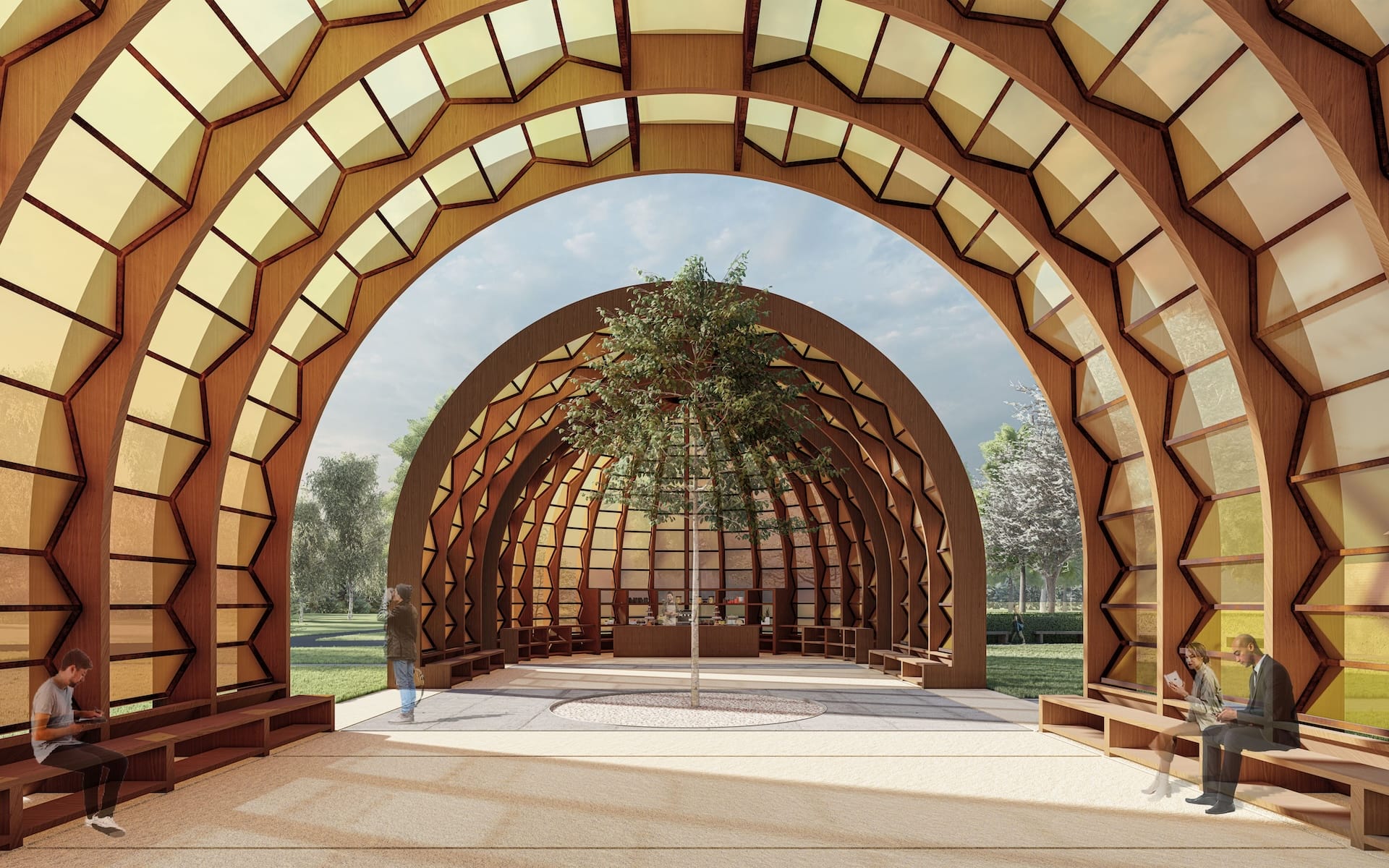Marina Tabassum Will Design the 2025 Serpentine Pavilion
The Bangladeshi architect’s namesake firm is known for socially and ecologically engaged structures that reckon with ephemerality and permanence

Marina Tabassum has been selected to design this year’s Serpentine Pavilion. The Bangladeshi architect’s proposal, called “A Capsule in Time,” prompts dialogue about permanence and the commission’s ephemeral nature through a structure that dials into the history and vernacular of Shamiyana tents or awnings common throughout South Asia. Slated to be built in London’s verdant Kensington Gardens outside Serpentine South, the pavilion will be publicly unveiled on June 6 and will play host to the gallery’s live and events program throughout the summer.

“A Capsule in Time” will be elongated in the north-south direction and features a central court aligning with Serpentine South’s bell tower. Inspired by park-going traditions and arched garden canopies that filter soft daylight through foliage, the pavilion features four wooden capsule forms with a translucent facade that diffuses and dapples light. Central to the structure is a kinetic element where one capsule moves and connects, transforming the pavilion into a new space. When envisioning her pavilion, Tabassum reflected on what she describes as the commission’s “transient” nature. “[It] appears to us as a capsule of memory and time,” she says. “The relationship between time and architecture is intriguing: between permanence and impermanence, of birth, age, and ruin; architecture aspires to outlive time.”
The pavilion also draws on the history and architectural language of Shamiyana tents or awnings. Similarly kinetic in their function, the structures common to South Asia comprise an external fabric supported by bamboo poles. They’re often mounted for outdoor gatherings and celebrations—perfectly suited for the Serpentine’s summer programs. “In the Bengal delta, architecture is ephemeral as dwellings change locations with the rivers shifting courses,” Tabassum says. “Architecture becomes memories of the lived spaces continued through tales.”

Tabassum’s structure kickstarts the Serpentine Pavilion’s milestone 25th year since launching with the late British-Iraqi architect Zaha Hadid in 2000. In its infancy, the commission was mostly awarded to bold-faced starchitects—Oscar Niemeyer, Rem Koolhaas, Peter Zumthor, and Jean Nouvel among them—but has recently become a distinctive bellwether of promising mid-career practitioners with global perspectives. Last year’s commission went to Minsuk Cho of South Korean firm Mass Studies, who mounted a star-shaped structure for gathering and repose. Lina Ghotmeh, Theaster Gates, and Counterspace landed the commission previously.
Since founding her eponymous firm in 2005, Tabassum has been socially, politically, and ecologically engaged. In addition to buildings sited in Dhaka, where she lives and works, her firm’s practice extends to researching environmental degradation within Bangladesh, a country vulnerable to the consequences of climate change. The studio also focuses on architecture’s role in addressing living conditions for the region’s marginalized individuals, aiming to uplift their living conditions. The firm previously designed Khudi Bari (“Small House”), an ongoing commission of modular, low-carbon houses perched on structural bamboo and steel joints to facilitate quick assembly and disassembly. They were developed during pandemic lockdown for Bangladeshi citizens living on the sand beds of the rivers Jamuna, Meghna, and Teesta.
